Bruce Springsteen: the 100 most inspiring musicians of all time
American singer, songwriter, and bandleader Bruce Springsteen (b. Sept. 23, 1949, Freehold, N.J., U.S.) became the archetypal rock performer of the 1970s and ’80s.
Bruce Springsteen grew up in Freehold, a mill town where his father worked as a laborer. His rebellious and artistic side led him to the nearby Jersey shore, where his imagination was sparked by the rock band scene and the boardwalk life, high and low. After an apprenticeship in bar bands on the mid-Atlantic coast, Springsteen turned himself into a solo singer-songwriter in 1972 and auditioned for talent scout John Hammond, Sr., who immediately signed him to Columbia Records.

His first two albums, released in 1973, reflect folk rock, soul, and rhythm-and-blues influences, especially those of Van Morrison, Bob Dylan, and Stax/ Volt Records. Springsteen’s voice, a rough baritone that he used to shout on up-tempo numbers and to more sensual effect on slower songs, was shown to good effect here, but his sometimes spectacular guitar playing, which ranged from dense power chord effects to straight 1950s rock and roll, had to be downplayed to fit the singersongwriter format.
With his third album, Born to Run (1975), Springsteen
transformed into a full-fledged rock and roller, heavily
indebted to Phil Spector and Roy Orbison. The album, a
diurnal song cycle, was a sensation even before it hit the
shelves; indeed, the week of the album’s release, Columbia’s
public relations campaign landed Springsteen on the
covers of both Time and Newsweek. Three years passed
before the follow-up, the darker, tougher Darkness on the
Edge of Town (1978), appeared. With “Hungry Heart,” from
The River (1980), Springsteen finally scored an international
hit single.
By then, however, he was best known for his stage shows, three- and four-hour extravaganzas with his E Street Band that blended rock, folk, and soul with dramatic intensity and exuberant humor. The band, a crew of
mixed stereotypes —from rock-and-roll bandit to cool music professional— was more like a gang than a musical unit, apparently held together by little other than faith in its leader.

Bruce Springsteen’s refusal, after Born to Run, to cooperate with much of the record company’s public relations and marketing machinery, coupled with his painstaking recording process and the draining live shows, helped earn his reputation as a performer of principle as well as of power and popularity. Nebraska (1982), a stark set of acoustic songs, most in some way concerned with death, was an unusual interlude.
It was Born in the U.S.A. (1984) and his subsequent 18-month world tour that cinched Springsteen’s reputation as the preeminent writer-performer of his rock-and-roll period.
Springsteen’s social perspective has been distinctly working-class throughout his career, a point emphasized both by his 1995 album, The Ghost of Tom Joad, which concerned itself with the economically and spiritually destitute in America and by his 1994 hit single (his first in eight
years), the AIDS-related “Streets of Philadelphia,” from the film Philadelphia, for which he won both an Academy Award and a Grammy Award.
The other side of Springsteen’s work is reflected in the albums that he produced in the period beginning with Tunnel of Love (1987) and including Human Touch and Lucky Town (released simultaneously in 1992). The songs on these albums are intensely personal reflections on intimate relationships.
In general, they have not been as popular. Bridging all this is the five-record set Bruce Springsteen and the E Street Band Live 1975–1985 (1986), which captures as much of his highly visual stage show of that period as can be rendered in a sole audio form. The breakup of the
E Street Band in 1989 and general trends in pop music fashion curbed Springsteen’s popularity.
In 1998, he put together a box set, Tracks, consisting for the most part of leftover material that had failed to make the cut on his albums with the band. This grandiose gesture established him as prolix beyond all but a couple of peers. Sales of Tracks were trivial compared with those for Live.
In 1999 Springsteen reunited the E Street Band. They appeared with him when he alone was inducted into the Rock and Roll Hall of Fame in early 1999, then spent a year touring with him, resulting in a live album (Live in
New York City [2001]) but only a handful of new songs.
On Sept. 21, 2001, Springsteen performed the national debut of his song “My City of Ruins” on a television special. It was written about Asbury Park but took on a different tone in the wake of the September 11 attacks. That tone continued on The Rising, his 2002 album with the E Street Band, which weighed the consequences of the attacks and their aftermath. Beginning on the Rising tour, Springsteen became an adamant critic of the U.S. government, especially regarding the Iraq War.
Springsteen’s 2005 solo tour, following the release of the Devils and Dust album, explored the full depth of his song catalog and continued his opposition to the administration’s policies.
We Shall Overcome: The Seeger Sessions (2006) took a turn unanticipated by even the closest Springsteen observers. He made the recording over a period of 10 years with a folk-roots band and a horn section.
It featured traditional American folk songs (“Oh, Mary, Don’t You Weep,” “Froggie Went A-Courtin’,” and “John Henry”) as well as songs associated with its inspiration, Pete Seeger (“My Oklahoma Home,” “How Can I Keep from Singing,” and “Bring ’Em Home”). Springsteen’s tour of the United States and Europe in 2006 featured a 20-piece band.
Magic (2007), another E Street Band album, sometimes spoke metaphorically and sometimes explicitly in opposition to the war and government intrusions on civil liberties. Springsteen continued his commentary through a worldwide tour with the E Street Band in 2007 and 2008.
After the April 2008 death of the E Street Band organist and accordionist Danny Federici from melanoma, the band’s playing acquired a darker urgency of tone. The later stages of the Magic tour featured arguably the most assertive, inspired playing Springsteen and the group had ever done.
Please, subscribe to our Library.
If you are already a subscriber, please, check our NEW SCORES’ page every month for new sheet music. THANK YOU!
Working on a Dream, released in early 2009, concerned itself lyrically with thoughts of love and life, how fleeting both are and what it takes to stay the course. The music on the album was a much more sophisticated version of what Springsteen had done on his first two albums, with a greater emphasis on harmony, especially vocal harmonies characteristic of the later work of the Beach Boys. In the lyrics, Springsteen’s knack for particular detail served him well.
On Feb. 1, 2009, Springsteen and the band were the featured entertainment at halftime of Super Bowl XLIII; with an average viewership of 98.7 million, the game was the most-watched televised sports event in American history.
Many fans and much of the press criticized Springsteen for commercializing himself this way. But in the aftermath, it was generally agreed that he had managed to condense the structure, message, humour, and athleticism of his live show into the 12 minutes allotted. On the largest popular culture platform available, Springsteen established that some rock artists remained determined to sustain their vitality and creative ambitions all the way to the end.
Bruce Springsteen’s Sheet Music download here.
Bruce Springsteen – Born In The U.S.A. (Full Album)1984
Track Listing
All tracks are written by Bruce Springsteen.
Side one
1.”Born in the U.S.A.”
2.”Cover Me”
3.”Darlington County”
4.”Working on the Highway”
5.”Downbound Train”
6.”I’m on Fire”
Side Two
7.”No Surrender”
8.”Bobby Jean”
9.”I’m Goin’ Down”
10.”Glory Days”
11.”Dancing in the Dark”
12.”My Hometown”
Personnel
Bruce Springsteen – lead vocals, lead guitar, acoustic guitar
The E Street Band
Roy Bittan – piano, synthesizer, background vocals
Clarence Clemons – saxophone, percussion, background vocals
Danny Federici – Hammond organ, glockenspiel, piano on “Born in the U.S.A.”
Garry Tallent – bass guitar, background vocals
Steven Van Zandt – rhythm guitar, acoustic guitar, mandolin, harmony vocals
Max Weinberg – drums, background vocals
Additional musicians
Richie “La Bamba” Rosenberg – background vocals on “Cover Me” and “No Surrender”
Ruth Davis – background vocals on “My Hometown”
Browse in the Library:
| Artist or Composer / Score name | Cover | List of Contents |
|---|---|---|
| Astor Piazzola Oblivion Guitar Arr. By Nadja Kossinskaja |
 |
Piazzola Oblivion Guitar arr. by Nadja Kossinskaja page 1-1 |
| Astor Piazzolla 12 Tangos Piano |
 |
|
| Astor Piazzolla 6 Tangos |
 |
Astor Piazzolla 6 Tangos |
| Astor Piazzolla Angel (Complete) For Piano (Different Version) |
 |
Astor Piazzolla Angel (Complete) For Piano (Different Version) |
| Astor Piazzolla Ave Maria (Piano) |
 |
|
| Astor Piazzolla Balada Para Un Loco (Cacho Tirao) Guitar |
 |
|
| Astor Piazzolla Maria De Buenos Aires, Opera Tango (Partitura completa) |
 |
|
| Astor Piazzolla Milonga Del Angel (Piano Solo) Arranged By Prof. John Mortensen Slow Tango |
 |
|
| Astor Piazzolla Milonga Del Angel (Piano Solo) Original |
 |
|
| Astor Piazzolla sheet music Le Grand Tango Score For Viola And Piano |
 |
|
| Astor Piazzolla Vuelvo al sur (piano) |
 |
|
| Astor Piazzolla – 5 piezas para guitarra (guitar sheet music) | Astor Piazzolla – 5 piezas para guitarra (guitar sheet music) | |
| Astor Piazzolla – Picasso (Tango) Piano |
 |
|
| Astor Piazzolla 4 Estaciones Porteñas Guitar arr. |
 |
|
| Astor Piazzolla Nightclub 1960 Duo Flute Guitar |
 |
|
| Astor Piazzolla – Adios Nonino (Two Pianos) | Astor Piazzolla – Adios Nonino (Two Pianos) | |
| Astor Piazzolla – Adiós Nonino (guitar sheet music) |
 |
|
| Astor Piazzolla – Adios Nonino Piano Solo |
 |
|
| Astor Piazzolla – Album No. 1 |
 |
Astor Piazzolla album no 1 |
| Astor Piazzolla – Album No. 2 |
 |
Astor Piazzolla – Album No. 2 |
| Astor Piazzolla – Album No. 4 |
 |
Astor Piazzolla – Album No. 4 |
| Astor Piazzolla – Buenos Aires Hora Cero | Astor Piazzolla – Buenos Aires Hora Cero | |
| Astor Piazzolla – Chau Paris (piano) | Astor Piazzolla – Chau Paris (piano) | |
| Astor Piazzolla – Complete Works – Obras Para Piano Y Varios Instrumentos (partituras, sheet music) | Astor Piazzolla – Complete Works – Obras Para Piano Y Varios Instrumentos (partituras, sheet music) | |
| Astor Piazzolla – Contrastes (Piano) | Astor Piazzolla – Contrastes (Piano) | |
| Astor Piazzolla – Coral (Piano) | Astor Piazzolla – Coral (Piano) | |
| Astor Piazzolla – Estaciones Porteñas for piano – für Klavier |
 |
Astor Piazzolla – Estaciones Portenas fur Klavier |
| Astor Piazzolla – Fuga 9 (Piano) | Astor Piazzolla – Fuga 9 (Piano) | |
| Astor Piazzolla – Invierno Porteno (guitar sheet music) |
 |
|
| Astor Piazzolla – Invierno porteño [clarinet-piano] |
 |
|
| Astor Piazzolla – La Muerte Del Angel (Guitar arr. sheet music) |
 |
|
| Astor Piazzolla – Libertango (Part A – Guitar Arr.) (Musescore File).mscz | ||
| Astor Piazzolla – Libertango for 2 pianos | Astor Piazzolla – Libertango 2KL | |
| Astor Piazzolla – Los pajaros perdidos (canción) piano vocal |
 |
|
| Astor Piazzolla – Milonga Del Angel (guitar arr. sheet music) |
 |
|
| Astor Piazzolla – Milonga del angel (Piano solo) |
 |
Astor Piazzolla – Milonga del angel |
| Astor Piazzolla – Oblivion (piano solo ver.) | Astor Piazzolla – Oblivion (piano solo sheet music) | |
| Astor Piazzolla – Oblivion (piano solo) |
 |
|
| Astor Piazzolla – Oblivion arr. by Najda Kssinskaja (Guitar arr. sheet music with TABs) | Astor Piazzolla – Oblivion arr. by Najda Kssinskaja (Guitar arr. sheet music with TABs) | |
| Astor Piazzolla – Oblivion Cello & piano | Piazzolla Oblivion cello piano arr. | |
| Astor Piazzolla – Oblivion for Piano solo sheet music (partitura) |
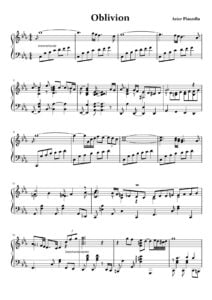 |
|
| Astor Piazzolla – Onda Nueve (Tango) Piano | Astor Piazzolla – Onda Nueve (Tango) Piano | |
| Astor Piazzolla – Otoño Porteño (guitar sheet music) | Astor Piazzolla – Otoño Porteño (guitar sheet music) | |
| Astor Piazzolla – Piano SongBook (Angel, Libertango, 6 Tangos, Estaciones Porteñas) |
 |
|
| Astor Piazzolla – Preludio 9 (Piano) | Astor Piazzolla – Preludio 9 (Piano) | |
| Astor Piazzolla – Río Sena (Tango) Piano | Astor Piazzolla – Río Sena (Tango) Piano | |
| Astor Piazzolla – Romanza del Duende (Piano) | Astor Piazzolla – Romanza del Duende (Piano) | |
| Astor Piazzolla – sheet music – Suite del Angel (Piano) |
 |
|
| Astor Piazzolla – Soledad (Solitude) Full score sheet music | Astor Piazzolla – Soledad (Solitude) Full score sheet music (first page) | |
| Astor Piazzolla – Suite Troileana 2 guitars (Bandoneon, Zita, Whisky, Escolaso) |
 |
|
| Astor Piazzolla – Suite Troileana 2 guitars arr. Sergio Assad (Bandoneon, Zita, Whisky, Escolaso) |
 |
|
| Astor Piazzolla – Suite Troileana arr for Piano (Bandoneon, Zita, Whisky, Escolaso) |
 |
|
| Astor Piazzolla – Tangos for 2 Pianos |
 |
Astor Piazzolla – Tangos for 2 Pianos |
| Astor Piazzolla – Tangus Dei (Piano) |
 |
|
| Astor Piazzolla – The Last Tango Music Of Guitar arr. |
 |
|
| Astor Piazzolla – Tristango (Piano) | Astor Piazzolla – Tristango (Piano) | |
| Astor Piazzolla – Vuelvo Al Sur (10 tangos and other pieces arr. piano) |
 |
Astor Piazzolla – Vuelvo Al Sur |
| Astor Piazzolla -Four, For Tango – Score |
 |
|
| Astor Piazzolla (Spanish Español Ed. 2018 El Ateneo 2020) (María Susana Azzi) Biography Book |
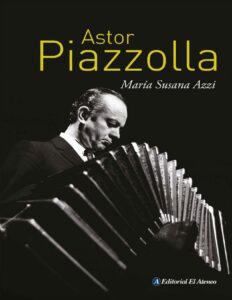 |
|
| Astor Piazzolla (Tango) Balada Para Un Loco – Guitar (letra Horacio Ferrer) |
 |
|
| Astor Piazzolla 100 Años Edicion Aniversario Sus mejores obras para piano |
 |
Astor Piazzolla 100 Años Edicion Aniversario Sus mejore obras para piano |
| Astor Piazzolla 25 Tangos for Clarinet and piano Clarinet Part in Bb |
 |
Astor Piazzolla 25 Tangos for Clarinet and piano Clarinet Part in Bb |
| Astor Piazzolla 28 tangos arranged For Piano |
 |
Astor Piazzolla 28 tangos arranged For Piano |
| Astor Piazzolla Album 20 compositions arr. for Piano |
 |
Piazzolla album |
| Astor Piazzolla Ave Maria (Piano and voice) |
 |
|
| Astor Piazzolla Cinco Piezas For Guitar |
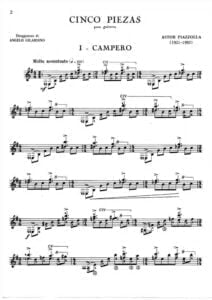 |
|
| Astor Piazzolla Color de Buenos Aires Suite letra Horacio Ferrer |
 |
|
| Astor Piazzolla Contrabajeando Double Bass And Piano Contrabajo Y Piano |
 |
|
| Astor Piazzolla Extasis Piano (Tango) |
 |
|
| Astor Piazzolla Flute or Violin Piano Collection |
 |
|
| Astor Piazzolla For Violin And Guitar (Astor Piazzolla) |
 |
Astor Piazzolla For Violin And Guitar (Astor Piazzolla)_compressed |
| Astor Piazzolla Guitar compositions Collection (Guitarra) sheet music, partituras | Astor Piazzolla Guitar compositions (Guitarra) sheet music, partituras | |
| Astor Piazzolla Horacio Ferrer Chiquilin De Bachin Piano vocal |
 |
|
| Astor Piazzolla La Muerte Del Angel Trio Violin Cello Piano Score |
 |
|
| Astor Piazzolla Le Grand Tango – Two Pianos | Astor Piazzolla Le Gran Tango – Two Pianos | |
| Astor Piazzolla Libertango (Guitar Solo Arr.) With Tab |
 |
|
| Astor Piazzolla Milonga Del Àngel (For Chamber Orchestra) Tangos |
 |
|
| Astor Piazzolla Oblivion (piano solo) |
 |
|
| Astor Piazzolla Oblivion arr. for 2 violins |
 |
|
| Astor Piazzolla Oblivion for Violin or Flute Cello Piano | Astor Piazzolla Oblivion for Violin or Flute Cello Piano | |
| Astor Piazzolla Oblivion Trans Solo Piano | Astor Piazzolla Oblivion Trans Solo Piano sheet music pdf | |
| Astor Piazzolla Oblivion Violin Guitar |
 |
|
| Astor Piazzolla Obras Completas Guitarra For Guitar |
 |
Astor Piazzolla Obras Completas For Guitar |
| Astor Piazzolla Piano Collection |
 |
Astor Piazzolla Piano Collection |
| Astor Piazzolla Piano Meditango |
 |
|
| Astor Piazzolla Romance Del Diablo Flauta Violin and Piano |
 |
|
| Astor Piazzolla Sensuel Piano |
 |
|
| Astor Piazzolla Tangazo for Orchestra Variaciones sobre Buenos Aires para orquestra |
 |
|
| Astor Piazzolla Tango Etudes (for flute or Violin) | Astor Piazzolla Tango Etudes (for flute or Violin) | |
| Astor Piazzolla Tango S V P For Violin Ensemble Solo | Astor Piazzolla Tango S V P For Violin Ensemble Solo | |
| Astor Piazzolla Tangos Arr Phillip Keveren The Phillip Keveren Series Piano Solo |
 |
Astor Piazzolla Tangos Arr Phillip Keveren The Phillip Keveren Series Piano Solo |
| Astor Piazzolla Tanti Anni Prima Ave Maria For Piano solo |
 |
|
| Astor Piazzolla Tanti Anni Prima Ave Maria Violin and Piano |
 |
|
| Astor Piazzolla Vuelvo Al Sur Flute or Violin and Piano | Astor Piazzolla Vuelvo Al Sur Flute or Violin and Piano | |
| Astor Piazzolla y Anibal Troilo- Contrabajeando (Tango) Piano | Astor Piazzolla y Anibal Troilo- Contrabajeando (Tango) Piano | |
| Atlantic Starr – Always | ||
| Atomic Kitten – The Tide Is High | ||
| Atomic The Musical By Philip Foxman And Danny Ginges Piano Vocal Score |
 |
|
| Atonement – Dario Marianelli (For Piano) |
 |
Atonement – Dario Marianelli (For Piano) |
| Au Clair De La Lune – Traditional (Musescore File).mscz | ||
| Audioslave Out Of Exile Guitar TABs |
 |
Audioslave Out Of Exile Guitar TABs |
| Audition (The Fools who Dream) La La Land OST | ||
| Audra Mcdonald Build A Bridge (Songbook) (Audra Mcdonald) Piano Vocal Guitar chords |
 |
Audra Mcdonald Build A Bridge (Songbook) (Audra Mcdonald) Piano Vocal Guitar chords |
| Augustana – Boston | ||
| Aura Lee (intermediate great jazz arrangement) G. Poulton | Aura Lee Jazz | |
| Aura Lee By G. Poulton Jazz Arrangement.mxl | ||
| Aura Lee G. Poulton (Easy version ) | Aura Lee Easy version | |
| Aura Lee Jazz (Musescore File).mscz | ||
| AURORA Conqueror Piano Solo arr. |
 |
|
| AURORA Running With The Wolves |
 |
|
| Aurora – Cure For Me |
 |
|
| AURORA Forgotten Love Piano with lyrics |
 |
|
| AURORA Half The World Away Sheet Music Piano Vocal Guitar chords |
 |
|
| AURORA Into The Unknown from Disney’s Frozen |
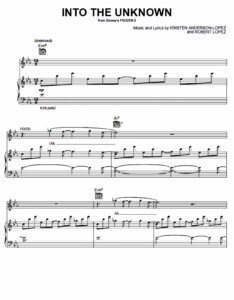 |
|
| AURORA It Happened Quiet Piano Solo arr. |
 |
|
| AURORA Runaway Piano Vocal guitar Chords |
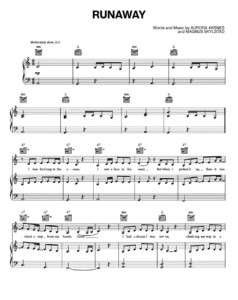 |
|
| AURORA Songbook Sheet Music Anthology Collection | AURORA Songbook Sheet Music Anthology Collection | |
| AURORA The River Aurora Piano Solo arr. |
 |
|
| Automatic Harmonic Analysis of Jazz Chord Progressions Using a Musical Categorial Grammar (Mark Wilding) | Automatic Harmonic | |
| Autour Du Jazz Guitar 4 pièces pour guitare (Thierry Tisserand) |
 |
Autour Du Jazz Guitar 4 pièces pour guitare (Thierry Tisserand) Contents — autour du jazz |
